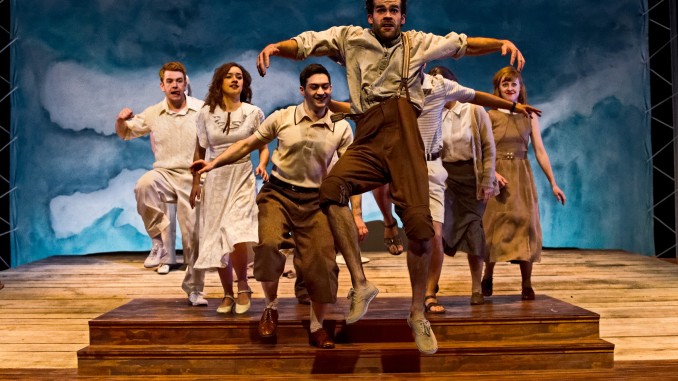
Milk and Honey Dreams [by James Wenley]
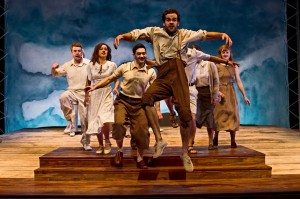
The End of the Golden Weather has got to be one of the great New Zealand stories. As a play, it’s endured far beyond its intended lifespan. Playwright Bruce Mason wrote it partly as a platform for himself, performing the work solo across NZ in the decades for a staggering 986 performances, until his death in 1982.
But the Golden Weather was to continue. The play not only continued its solo tradition with a select few actors being entrusted with the play, but has been adapted for many actors – Raymond Hawthorne did a company version in the 80s, and Ian Mune directed the film in 1991.
Auckland Theatre Company’s production, part of the Real NZ Festival and just in time for the Rugby World Cup influx, is an ensemble version for 9 actors, which has its roots in similar productions Murray Lynch directed in 1987 and 1990. Interestingly, both Lynch and ATC’s artist director Colin McColl stage-managed the play for Bruce Mason himself early in their careers. This play looms large in our theatre history.
Mason’s Golden Weather at its heart is a universal ‘coming of age’ tale about growing up, leaving childhood behind and entering adulthood. It follows Boy* through a significant summer in 1930s Te Parenga (aka Takapuna, Mason’s childhood home). Some moments are incidental – encounters with Te Parenga residents on the beach. Some memorably capture the injustices of childhood – one’s younger brother upstaging your carefully planned Christmas pageant. Some are troubling – the ‘night of the riots’ where the 1932 Queen St riots ripple through Te Parenga’s peace. Some are quietly yet decisively shattering – the events involving Firpo, more on him later.
* Did Taika Waititi take a leaf out of Mason’s book in taming his titular Boy? His film evokes a similar New Zealand nostalgia of a different era and cultural frame…
What really makes this play special is the universal becoming specific in its uniquely (Pakeha) New Zealand identity. Set at a time of only 100 years of European settlement, and when wearing shorts on the beach is controversial, it is a different world from today, yet nostalgically familiar. The Boy’s story seems to have a wider resonance of a nation growing up. The 1930s must have been a vivid past for Mason. While one line says they are British “at least until a while ago”, Weather’s culture is still firmly attached to mother Britain, with not a Maori in sight. Writing in 1959, Mason caught a sense of a nation in transition, learning to stand on its own feet, our old Golden Weather at an end – or a new spell beginning?
Brian King’s set design reflects a glorious past, a raked wooden floor with the phalanges of Rangitoto rising in the background. While a little more ornate than Mason may have been use to, it’s a beautiful playing space that keeps in the spirit of the thing, the actors evoking scenes and events through their characterisations and a company of chairs.
The text is of Mason’s original, interpreted not by one actor but by an ensemble of nine. The cast are young, but seasoned. The early set-up makes it seems at first that poster boy Nic Sampson will carry the emotional through line of Boy, the other actors stepping up to help him with narration and play the multitude of characters that inhabit Te Parenga, but after this initial confusion of purpose it becomes apparent that Boy belongs to all, and indeed the recurring characters get shared around too. The cast bring their own styles and strengths to the fore. Sampson is most in tune with the contradictions of childhood, Dena Kennedy has a clear storytelling style and rapport with the audience, and Keisha Castle-Hughes a gentle sweetness.
Sophie Roberts excels in the broad character roles, with excellent facial inflections. Byron Coll can’t help but steal scenes in his playing of the hapless Boy as he puts on a Christmas pageant where everything goes wrong (The Christmas at Te Parenga has become an institution on Christmas Day at Takapuna), and the earlier play-acting of Boy’s father as a maniacal doctor when he entertains the kids. Matariki Whatarau is my favourite as Boy’s cheeky younger brother, a role that seemed to benefit the most from having the one actor (mostly) play it.
The structure of the play is such that the first half is a series of vignettes and moments that establish the world of Boy’s Te Parenga receding summer childhood, and it’s not to the second half that we get to the real drama – Firpo, who seeks to become a ‘made man’ by winning the Olympic Games. To older eyes Firpo can be written off –a deluded mental case, but to Boy’s younger eyes he’s a hero, full of potential. Both Whatarau and Tim Carlsen, who take the role, make us want to believe in him too. Carlsen, who takes the bigger allocation, plays Firpo with a memorably gangly physicality and gusto, though he sometimes flirts a little too close to the edge of caricature. When Boy finally sees Firpo through adult eyes summer is at its end.
The ensemble format certainly fits the spirit of Mason’s solo, and when the actors are in commune and working together it’s powerful to watch. By having many narrators, it’s as if this story is happening to many, our universal New Zealand coming of age myth – suggestive of the many kiwis that have enjoyed this story for the past 50 years.
I went away however with the nagging question of whether the ensemble format does more to hinder than help the storytelling. It certainly loses its central focus. Democratic role allocations seem arbitrary, and just as I’m engaging with one actor, another arrives onstage, and I enjoy some more than others.
Seeing Stephen Lovatt (currently bathing in The Only Child) perform Golden Weather as a Solo in the Herald Theatre in 2006 was a magical theatre experiences for me. I could ‘see’ in my mind the location and faces, and his Firpo still remains vivid. The ensemble format in contrast ‘shows’ us too much, asks the audience to do less of the work. It’s hard to go past the imaginative force of one actor and their audience, as it must have been in Mason’s day. While this production never quite reaches that magic for me, it has its own delights and viable identity.
I hope this production succeeds in introducing a new generation to the story – over 2000 school kids are booked to see the show as part of an initiative by the Lion Foundation. And if it catches some of the international Rugby tourists than that’s no bad thing either!
The End of the Golden Weather is presented by Auckland Theatre Company and plays at the Maidment Theatre until 24th September. More details at Auckland Theatre Company.

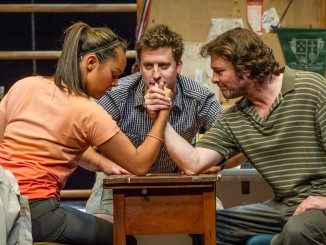
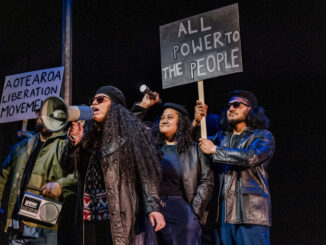
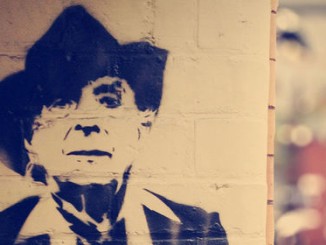
Leave a Reply